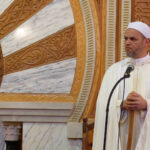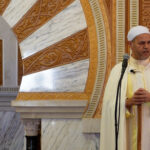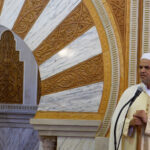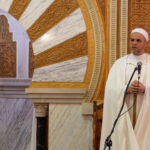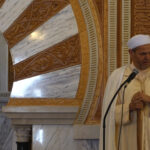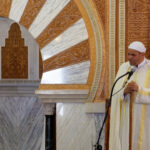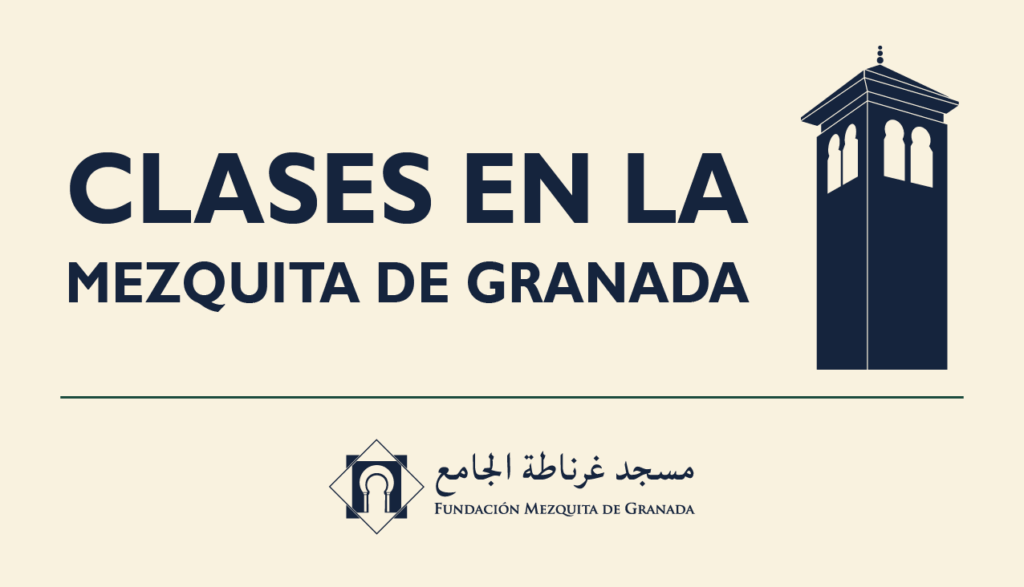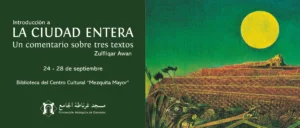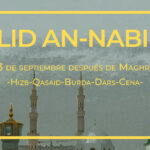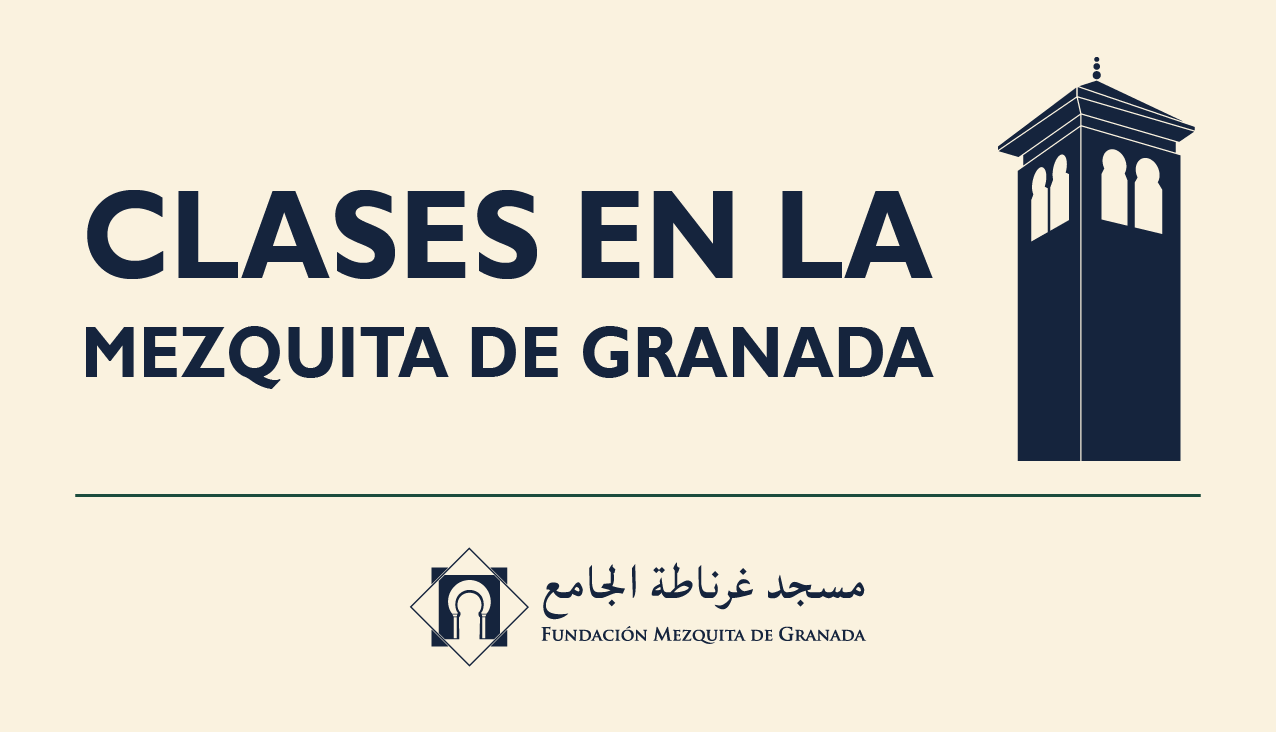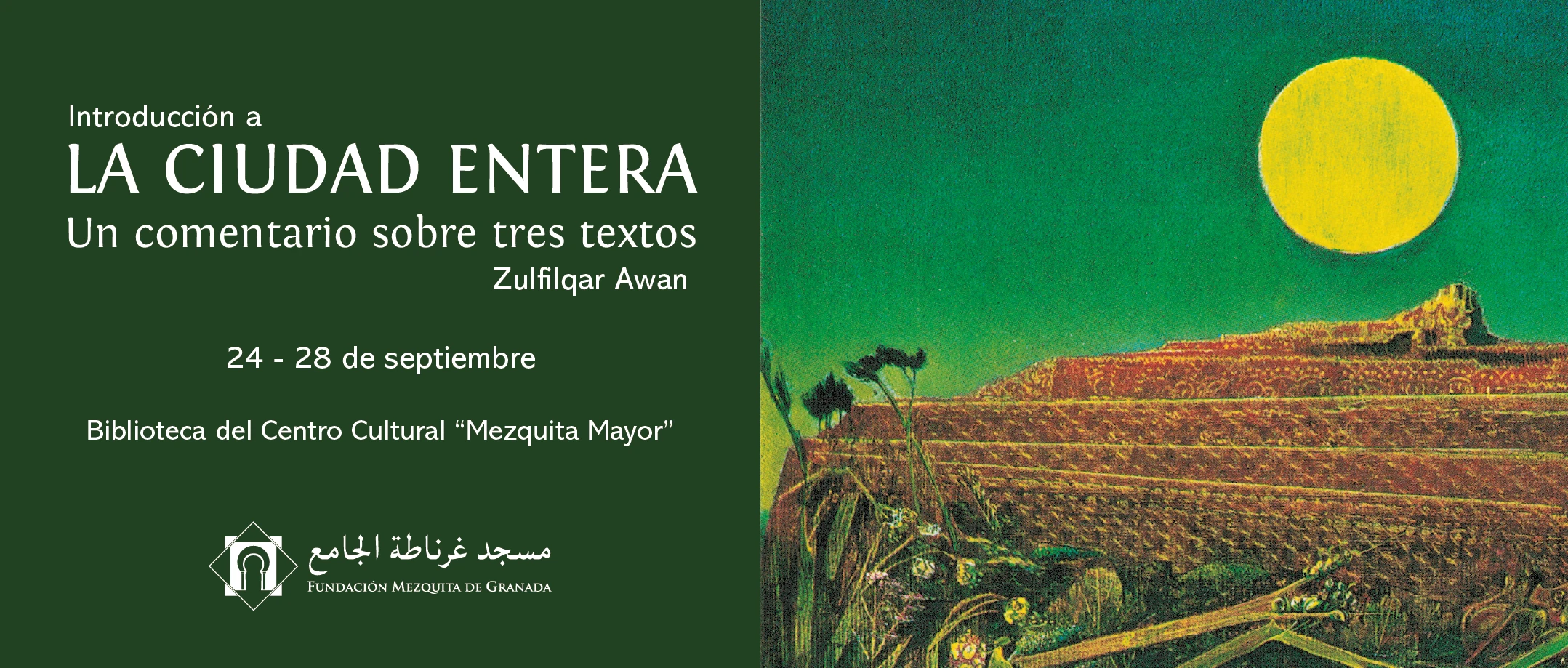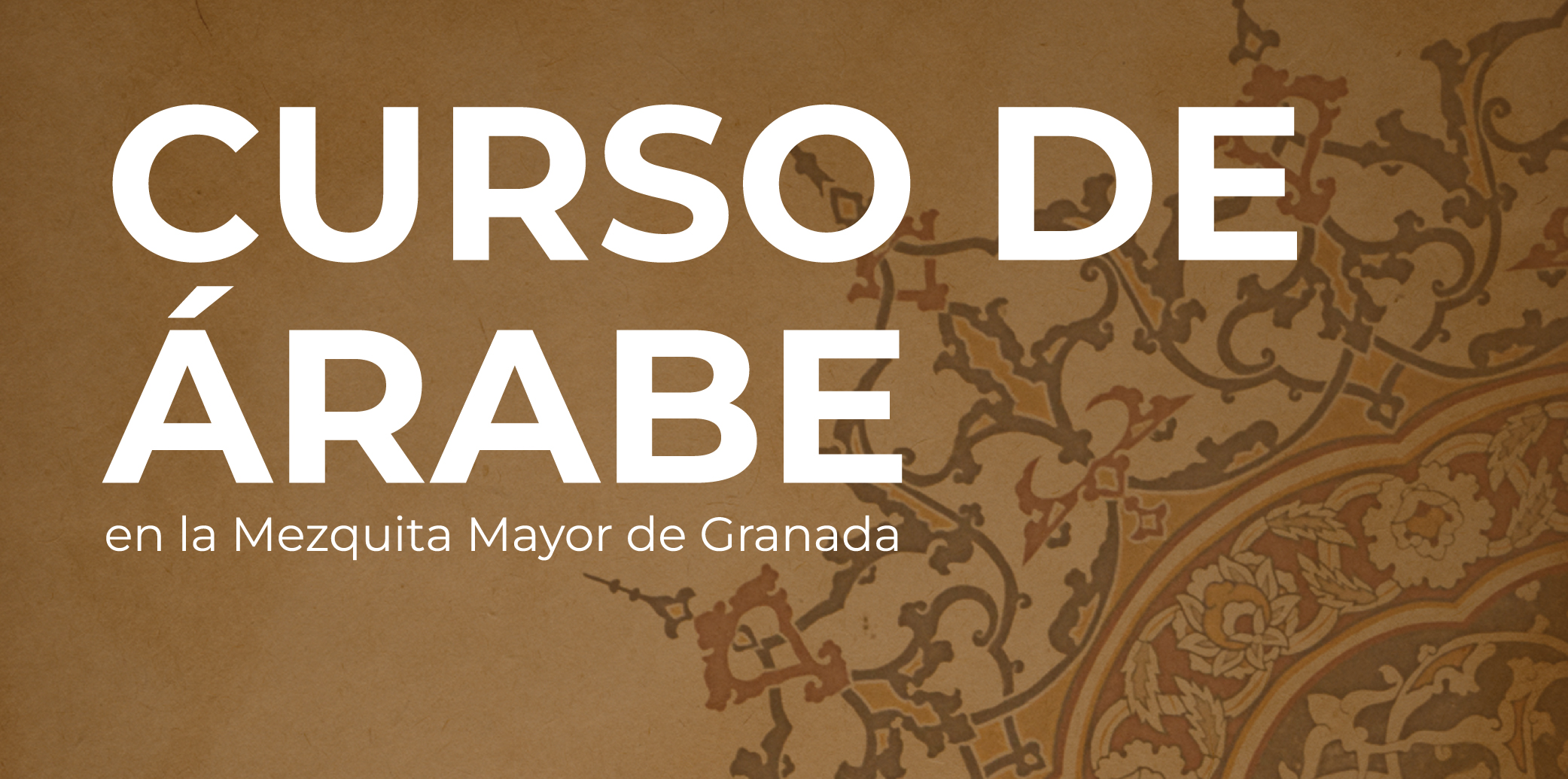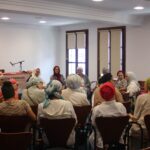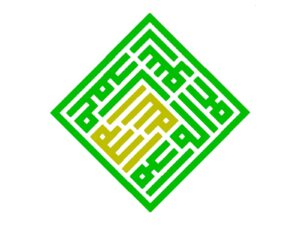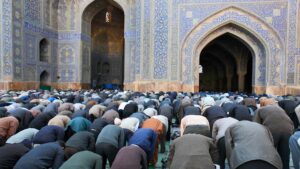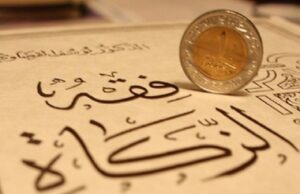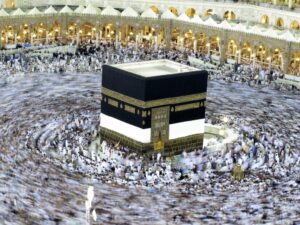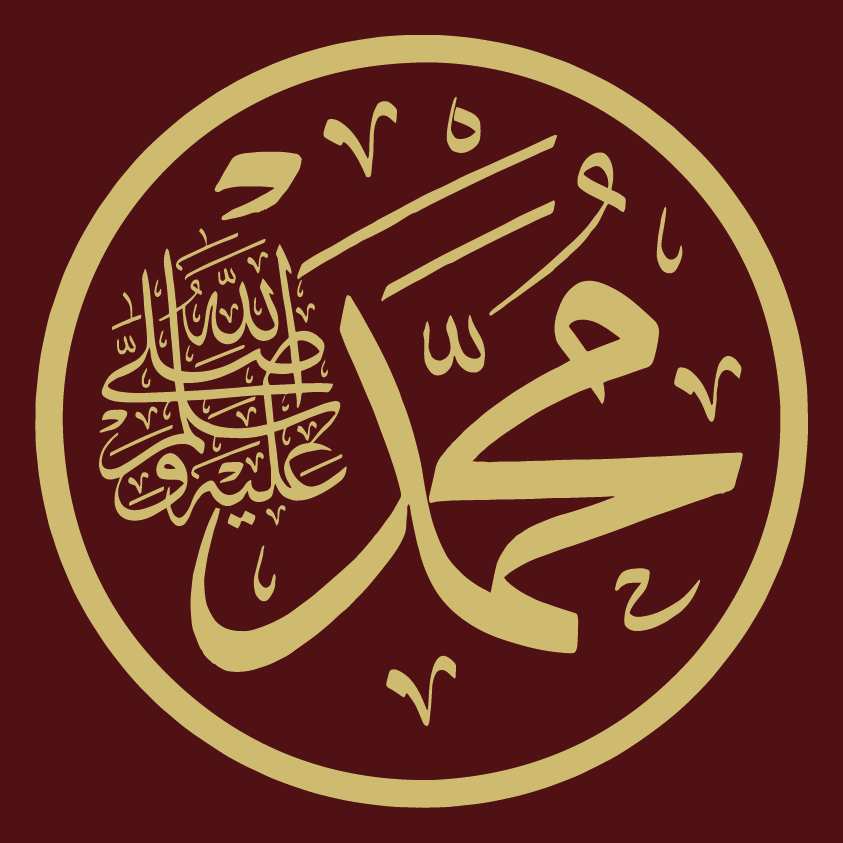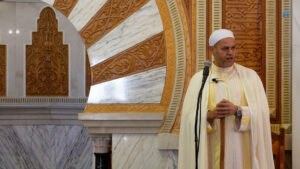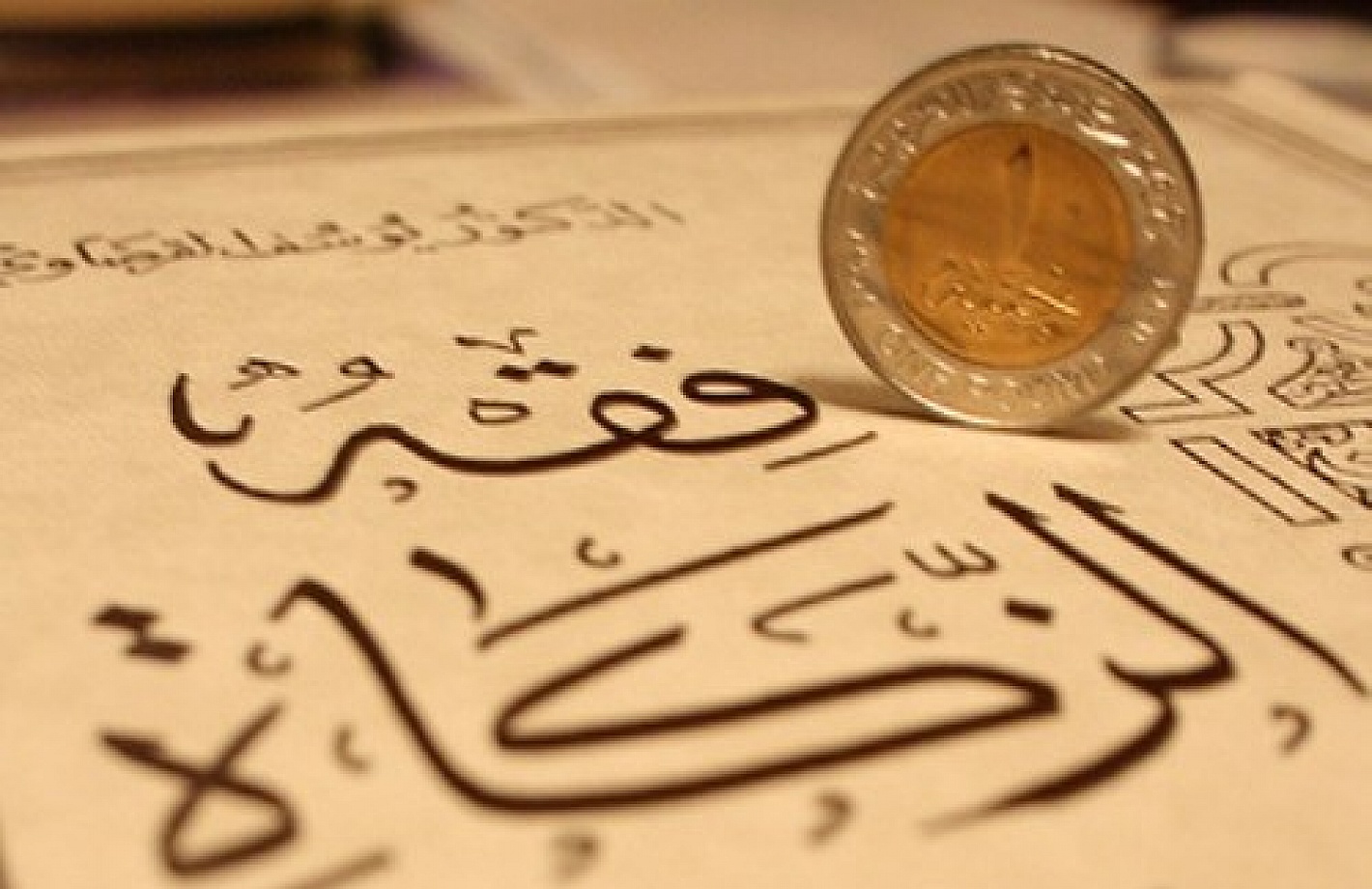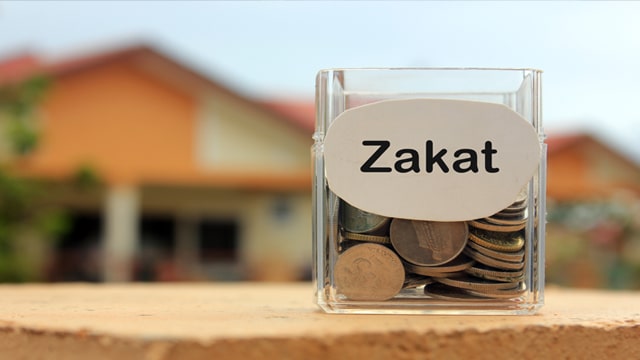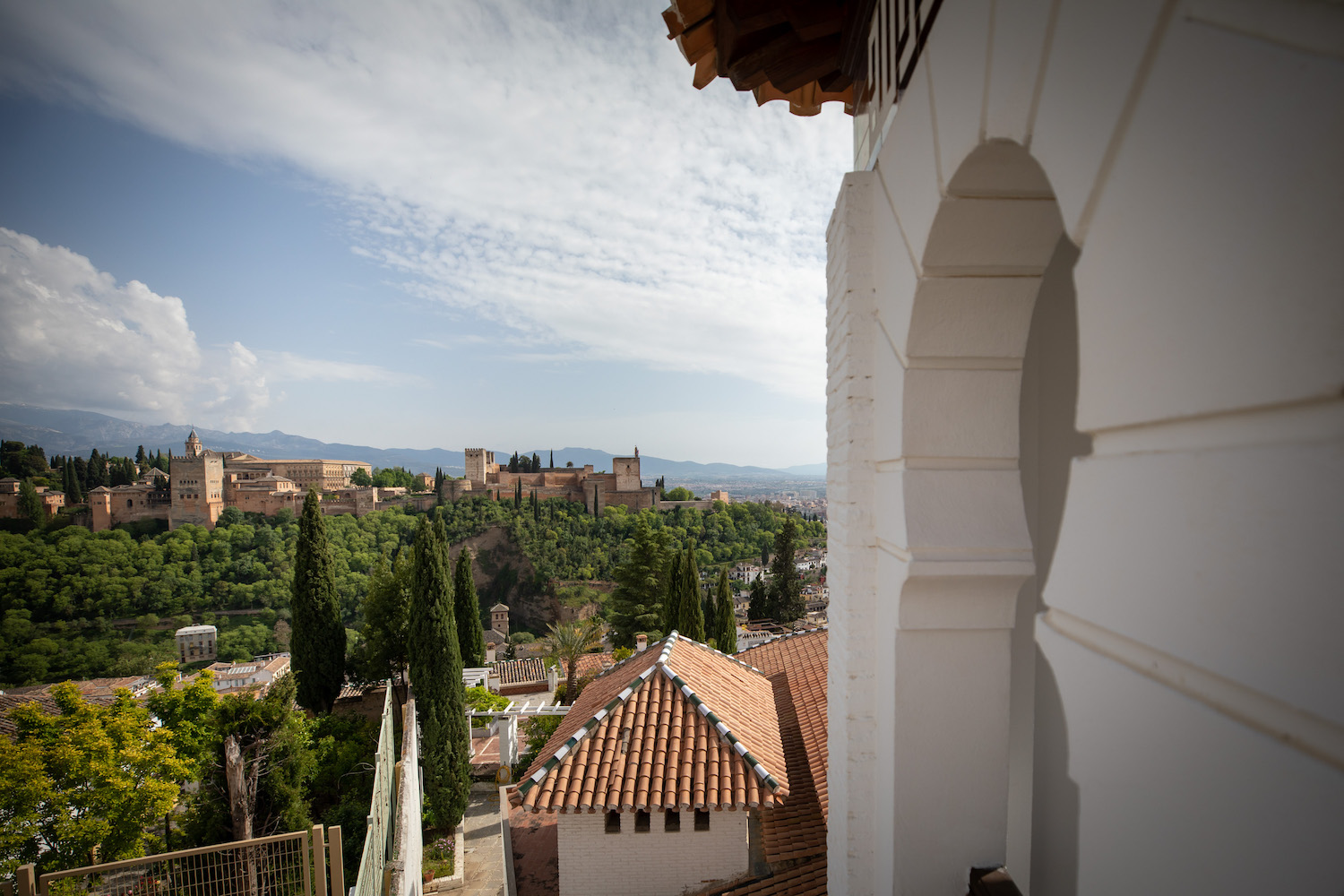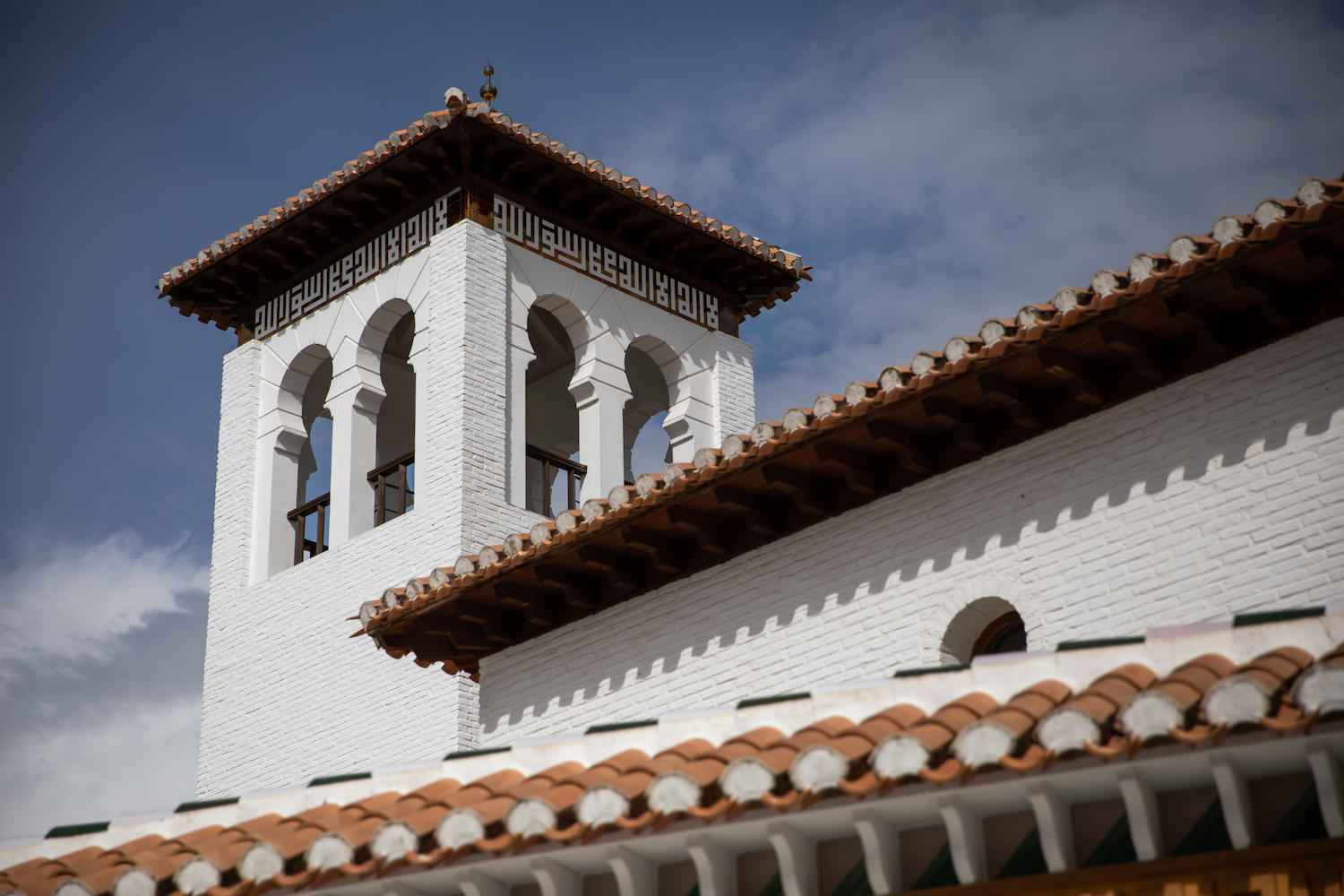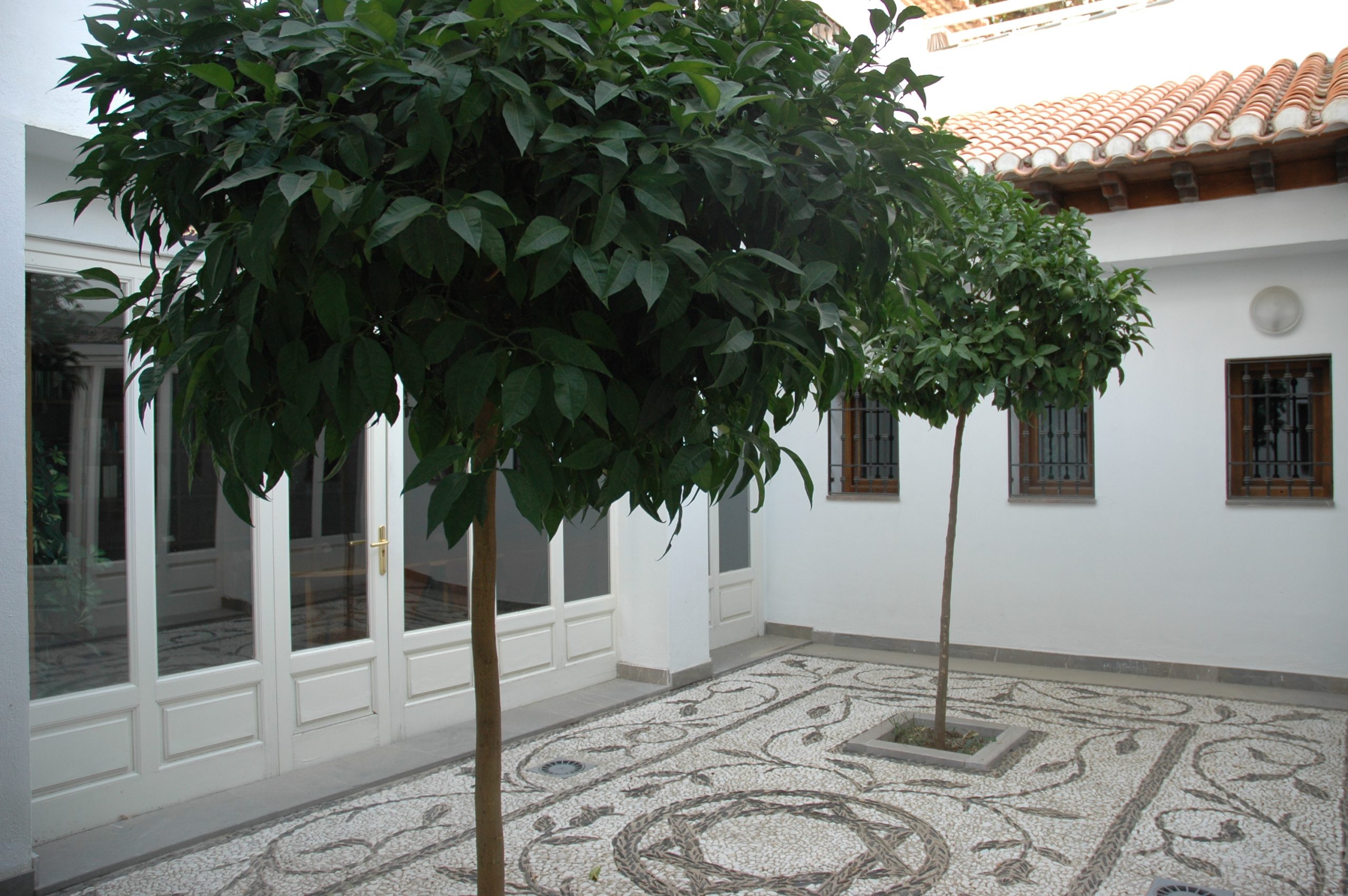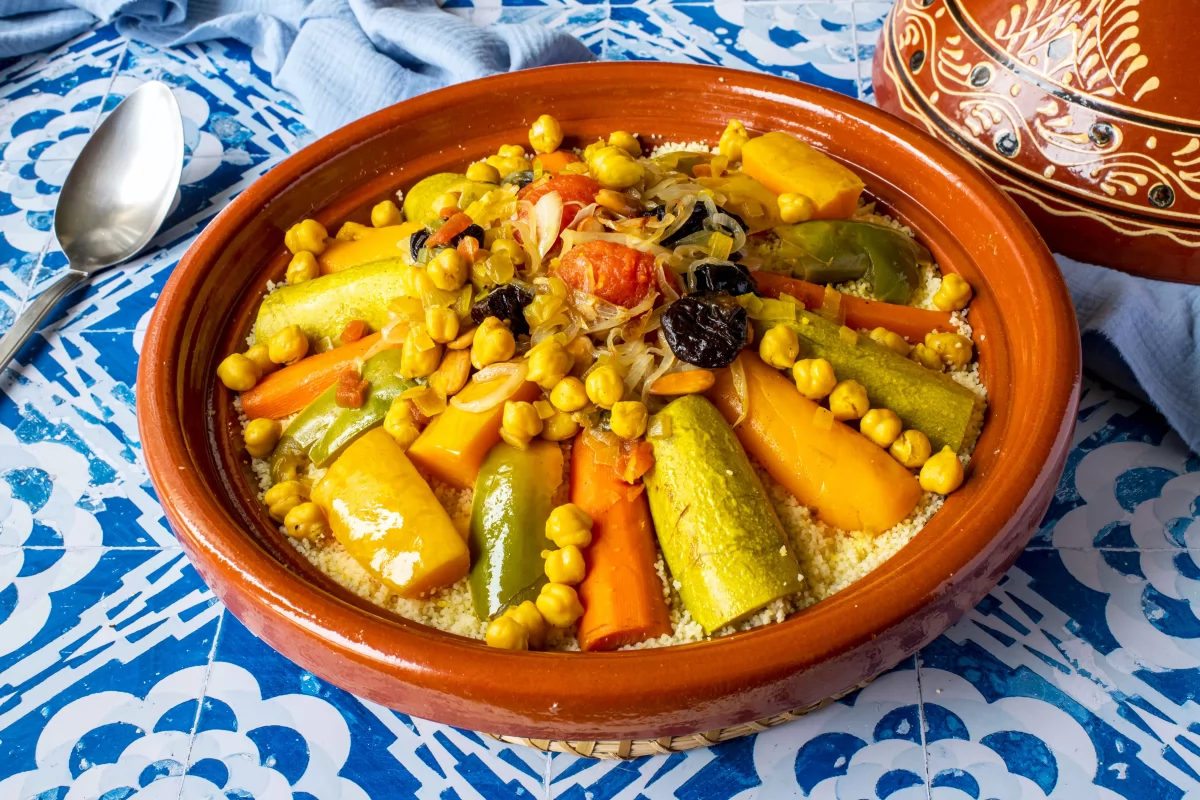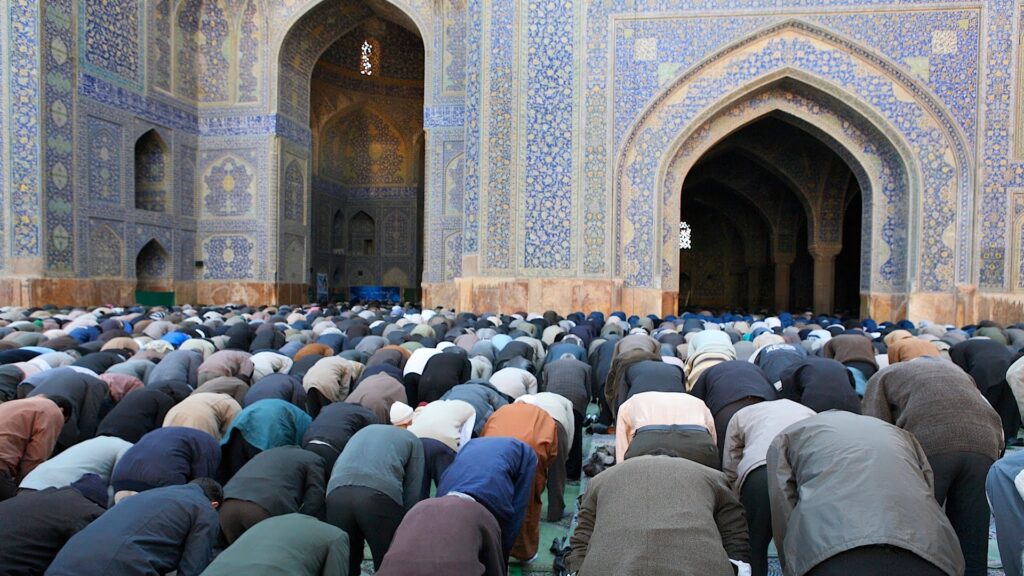El segundo pilar del Islam es el Salat (la oración), y es obligación para todo musulmán el rezar cinco veces al día en sus tiempos prescritos. El Salat, es la piedra angular del Din. Es el acto de sometimiento a Allah, de conversación intima y expresión de gratitud y de humildad. Es una pauta diaria que incluye movimientos corporales, palabras, así como un estado de concentración y de presencia.
El Salat tiene condiciones previas: la primera es que hay que estar purificado, y que sin estar purificado la oración no es válida. Esta purificación incluye el lugar de oración, el cuerpo y la vestimenta. El lugar de la oración debe estar limpio de toda impureza y la vestimenta del que reza libre de cualquier resto de orina, heces o sangre. La purificación del cuerpo es la mayor (ghusul), la menor (wudu) y el sustitutivo cuando no se encuentra o no se puede utilizar el agua que es la purificación con arena (tayammum).
EL GHUSUL
El Ghusul es la purificación mayor del cuerpo entero con agua. Se hace necesaria por una serie de causas: eyaculación, emisión seminal durante el sueño, después de haber mantenido relaciones sexuales -tanto el para el hombre como para la mujer- tras terminar en la mujer la menstruación, las hemorragias del parto, y también -tanto hombres como mujeres- al entrar al Islam. Esta purificación es necesaria tanto para hacer la oración, y para cualquier otro acto de adoración, como recitar el Corán, entrar en la mezquita, recordar a Allah y suplicarle etc.
El ghusl (purificación mayor) consiste en una limpieza con agua del cuerpo entero, siendo obligatorio frotar todas las partes del cuerpo, bien con la mano, esponja, o manopla, y el agua ha de penetrar bien en el cuero cabelludo. Es recomendable realizar el lavado de arriba hacia abajo y de derecha a izquierda.
EL WUDU
La purificación menor (wudu), consiste en un lavado de partes específicas del cuerpo, que son: las manos, la cara, los brazos, pasar las manos por la cabeza, los oídos y los pies. Se ha de comenzar poniendo la intención de hacer wudu como acto de purificación ritual cuyo significado es lavar los miembros y partes con las que actuamos y cometemos acciones erróneas,
La intención es lo primero, tanto en el wudu, como en el ghusl, como en el Salat, … etc. Tras tener conciencia de que vas a hacer wudu, empiezas lavando las manos tres veces, luego se lleva agua a la boca con la mano derecha y se enjuaga, esto se repite tres veces. Se continua aspirando agua por la nariz y expulsándola, también tres veces. Luego la cara, también tres veces. Se continua lavando los brazos hasta los codos, incluidos éstos, tres veces, lavando primero el derecho y luego el izquierdo. Acto seguido la cabeza, y consiste en pasar las manos húmedas por la cabeza, empezando por el nacimiento del cabello hasta la nuca, (sin incluirla) y luego volver, sin volver a mojarse las manos, simplemente ida y vuelta. Se continúa con la limpieza de las orejas, que también se hace sólo una vez, con los dedos húmedos por dentro y por fuera. Luego, por último, viene la limpieza de los pies hasta los tobillos (incluidos) tres veces, y se limpian con la mano izquierda. Se debe empezar limpiando el derecho y luego el izquierdo.
Se acaba diciendo la Shahada, ya estamos en disposición de hacer la oración.
EL TAYAMMUM
El tayyammum es la alternativa cuando no se encuentra o no se puede usar agua para la purificación. Cuando el que va a rezar no encuentre agua para hacer wudu, o esta enfermo y teme que al hacer wudu vaya a empeorar su estado, en esos casos lo que ha de hacer es: -tayammum- que es el sustituto del wudu.
El tayyammum o purificación con la tierra (arena, roca o tierra limpia) y que consiste (después de poner la intención) en pasar las manos sobre la piedra, arena o tierra limpia, y frotarse toda la cara, desde un lóbulo de la oreja a otra, y desde el final de la barbilla hasta el crecimiento del pelo, es importante cerciorarse de que no se deja nada sin frotar. Acto seguido se vuelven a pasar las manos sobre la piedra y se frotan los brazos hasta los codos y pasándose los dedos de una mano sobre los de la otra. Este tipo de purificación, sólo sirve para una oración obligatoria y para rezar otra hay que volver a hacerla.
Para hacer el salat hay que estar purificado con una de estas purificaciones que hemos enumerado anteriormente.
LA ORACIÓN
La oración prescrita (Salat) es la piedra angular del Din, es decir el sustento y fundamento de las prácticas de adoración. Es una parada diaria, en tiempos establecidos, para mostrar sumisión, expresar gratitud, suplicar ayuda y recordar a Allah. La oración prescrita (Salat) protege a quien la realiza de la indecencia y de la maldad. La oración es la línea divisoria entre la creencia y la infidelidad o encubrimiento de la verdad.
La oración prescrita se compone de actos físicas y visibles del cuerpo: estar en pie, doblarse, postrarse y sentarse en el suelo; de recitaciones unas audibles (durante la noche) y otras secretas o silenciosas, y de actos invisibles del corazón, tan esenciales y necesarios como los actos físicos: la intención, la humildad, el recogimiento y la concentración.
Los tiempos de los cinco Salat (oraciones prescritas) obligatorios son los siguientes:
1. La primera de ellas, es la oración de Subh, la oración del amanecer. Su tiempo empieza al despuntar del alba y finaliza con la claridad patente y la aparición del disco solar.
2. La segunda es la oración de Duhur, la del mediodía, y su tiempo comienza cuando el sol ha pasado su cenit y las sombras se empiezan a alargar.
3. La tercera oración es Asr, la de media tarde, y su tiempo comienza cuando uno se coloca de cara al sol, erguido, y si el disco solar entra en su campo visual mirando en línea recta entonces es que ha entrado la hora de Asr, y su tiempo finaliza con el amarillear del sol, poco antes de la puesta del sol.
4. La cuarta oración es la de la puesta del sol, Magrib, y su tiempo comienza al ocultarse el disco solar en el horizonte (en un lugar llano sin montañas). No se debe retrasar esta oración por que su tiempo es muy corto.
5. La quinta y última oración del día es Isha, la de la noche. Su tiempo comienza al desaparecer los últimos colores rojizos de la puesta del sol en el poniente, y con la aparición de las primeras estrellas en el cielo.
COMO SE HACE EL SALAT
Veamos como se realizan las oraciones.
Cada oración se compone de un número determinado de Rakats (que es un ciclo de movimientos). La oración consta de una serie de movimientos que se realizan en un orden determinado, y en cada una de las posiciones se pronuncian determinadas recitaciones, esto lo explicaremos con unos esquemas para que sea más fácil y simple de entender.
Las recitaciones del Coran de los Salat se hacen en voz alta cuando el sol esta oculto (Magrib, Isha y Subh) y en voz baja cuando el sol esta en el cielo (Duhur y Asr).
– Subh (Amanecer) Dos Rakats recitados en voz alta.
– Duhur (Mediodía) Cuatro Rakats recitados en silencio. (2+2)
– Asr (Media tarde) Cuatro Rakats recitados en silencio. (2+2)
– Magrib (Puesta de sol) Tres Rakats, los 2 primeros en voz alta y el ultimo en silencio. (2+1)
– Isha (Noche) Cuatro Rakats, los 2 primeros en voz alta, y los 2 últimos en silencio (2+2).
La recitación en silencio, consiste en decir sin emitir voz, es decir no simplemente pensarlo con la cabeza, si no que hay que recitarlo: la lengua y la boca deben tener movimiento. En el caso de la mujer, en su recitación en voz alta no tiene que elevar la voz, ha de ser escuchada sólo por ella misma, y la que es en silencio, igual que la del hombre.
SURAT AL FATIHA
En todos los Rakats de todas y cada una de las oraciones, estando en la posición erecta, de pie, se ha de recitar siempre la Surat del Fatiha, que es:
Alhamdu lillahi rabbil ‘alamin, arrahmani rrahim, maliki iaumiddin, iyaka na’budu wa iyaka nastai’n, ihdina ssiratal mustaqim, siratal ladina an’amta ‘alaihim, ‘gairil mag’dubi alaihim wala ddaalin.
La traducción:
En el Nombre de Allah, el Misericordioso, el Compasivo. Las alabanzas a Allah, señor de los mundos, el Misericordioso, el Compasivo. Rey del Día de la Retribución. Sólo a Ti de adoramos, sólo en Ti buscamos ayuda. Guíanos por el camino recto, el camino de los que has favorecido, no el de los que son motivo de ira ni el de los extraviados.
SURAT DE LA SINCERIDAD
En los primeros dos Rakats de cada oración después de la Surat Al Fatiha, se ha de recitar alguna de las otras Surats del Corán, o alguna aleya. A continuación se encuentran algunas de estas Surats más pequeñas y mas fáciles de memorizar:
Qul huwa Allahu ahad, Allahu ssamad, lam ialid wa lam iulad, wa lam iakun lahu kufuan ahad.
La traducción:
Di: El es Allah, Uno. Allah, el Señor Absoluto. No ha engendrado ni ha sido engendrado. Y no hay nadie que se le parezca.
SURATS DE PROTECCIÓN
Qula ‘audhu birabbil falaqi, minsharri ma jalaqa, wa min sharri ‘gasiqin idha waqaba, wa min sharrin-naffazati fil ‘uqadi, wa min sharri haasidin idha hasad.
La traducción:
Di: Me refugio en el Señor del rayar del alba. Del mal de lo que ha creado. Del mal de la noche cuando se hace oscura. Y del mal de las que soplan en los nudos. Y del mal del envidioso cuando envidia.
Qula ‘audhu birabbi nnasi, maliki nnasi, ilahi nnasi, min sharril waswasil jannasil ldhi iuwaswisu fis- sudurin nasi, minal yinnati wa nnasi.
La traducción:
Di: Me refugio en el Señor de los hombres. El Rey de los hombres. El Dios de los hombres. Del mal de susurro que se esconde. Ese que susurra en los pechos de los hombre y existe entre los genios y entre los hombres.
LOS MOVIMIENTOS DEL SALAT
El ciclo de movimientos que se ha de llevar a cabo en cada uno de los rakats, es el siguiente:
Esta posición es la conocida como Qiyam, estar en pie. En esta posición se han de recitar la Surat al Fatiha, y alguna de las otras Surats. Es la posición inicial de la oración. Tras haber puesto la intención, se dice Allahu Akbar, haciendo un movimiento que consiste en llevar los brazos hasta la altura de los hombros y bajarlos, mientras se pronuncia el Allahu Akbar. (Allah es el mas grande).
Después de la recitación de la Surat AlFatiha y de alguna más, el musulmán se dobla en signo de humildad ante su Creador, posición llamada Ruku’. Al moverse, también pronuncia Allahu Akbar. En esta posición se dice tres veces (en silencio) Subhana rabbial adhim, -gloria a mi Señor, el Inmenso-. Después se incorpora de nuevo, vuelve a la posición anterior (Qiyam), pronunciando en el movimiento: Sami’a Allahu liman hamida, rabbana wa lakal hamd. -Allah escucha a quien le alaba. ¡Señor nuestro! A Ti te pertenecen las alabanzas!.
A continuación desde esta posición el musulmán se postra con la frente en la tierra, posición llamada Sayyda (postración) y pronunciando al tiempo que realiza el movimiento: Allahu Akbar. Durante su postración el musulmán dice en silencio subhana rabbial ‘ala, -glorifico a mi Señor, el Altísimo- tres veces, y tras esto, diciendo Allahu Akbar, se sienta, yulus.
En la posición de yulus, (sentado) se recita en silencio: Allahumma-gfirli wa-rhamni, -Oh Allah, perdóname y ten misericordia conmigo-. Tras esto, se vuelve a pasar a la posición de sayyda, diciendo Allahu Akbar, y en sayyda se ha de decir otra vez subhana rabbial ‘ala. -Glorifico a mi Señor, el Altísimo-.
Después de la sayyda se vuelve a la posición de bien qiyam (en pie) para realizar un segundo ciclo de movimientos (rakat). En el último ciclo después de la postración el musulmán se sienta yulus (sentado) y esa es la posición final.
Por ejemplo, si estas rezando duhur, en el primer rakat después de la segunda sayda te levantas, en el segundo rakat después de la segunda sayda te quedas sentado, en el tercero te levantas y en el cuarto te vuelve a quedar sentado en la posición de yulus. Y es lo mismo en las oraciones de Duhr, Asr e Isha.
En la oración de Subh como solo son dos rakats, en el primero te levantas y en el segundo te sientas, y en la de Magrib, en el primero te levantas, en el segundo te sientas, y en el tercero te sientas también, y haces el Tashahud.
En la posición de yulus (sentado) se dice la plegaria llamada el Tashahud, o testimonio, que es:
Attahiyatu lillah, assakiyatu lillah, attayibatu salawatu lillah, assalamu alaika ayuha nabiu wa rahmatullah wa barakatuh, assalamu ‘alaina wa ‘ala ibadi lillahi ssalihin. Ashadu an la ilaha illa Allah, wa ashadu anna muhammadan abduhu wa rasuluh.
La traducción:
Los saludos le son debidos a Allah, las cosas puras le pertenecen a Allah, y las mejores oraciones le pertenecen a Allah. La paz contigo ¡oh profeta! y la misericordia de Allah y Su bendición. La paz sea con nosotros y con todos lo siervos rectos de Allah. Doy testimonio de que no hay mas dios que Allah y doy testimonio de que Muhammad es Su siervo y mensajero.
Y en el último rakat de cada oración, después de esto, se dice a continuación:
Allahumma salli ‘ala muhammad, wa ‘ala ali muhammad, war-ham muhammadan wa ‘ala ali muhammadin, wa barik ‘ala muhammad, wa ‘ala ali muhammad, kama sallaita wa rahimta wa barakta ‘ala ibrahim wa ‘ala ali ibrahim, fil alamina, innaka hamidun mayid.
La traducción:
¡Oh Allah! Bendice a Muhammad y a la familia de Muhammad, y concede misericordia a Muhammad y la familia de Muhammad, y da tu baraka a Muhammad y a la familia de Muhammad, como derramaste Tu bendición y tu misericordia y Tu baraka sobre Ibrahim y sobre la familia de Ibrahim en todos los mundos. Verdaderamente Tu eres digno de alabanza, majestuoso.
EL CICLO COMPLETO DE MOVIMIENTOS
Este el ciclo entero de un rakat completo: Son cuatro posiciones: en pie (qiyam), inclinado (ruku’) vuelta a la posición recta (qiyam), la postración (suyud) dos veces y sentado (yulus) entre ambas postraciones. Los rakats se hacen en pares, por tanto después del primer rakat se vuelve uno a levantar a la posición en pie para realizar el segundo rakat.
La oración termina diciendo Assalamu Alaykum hacia la derecha.




